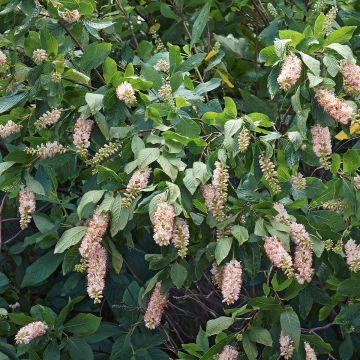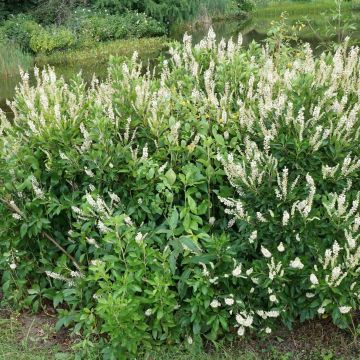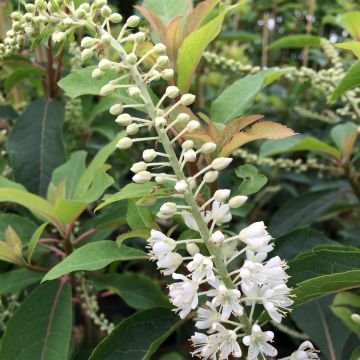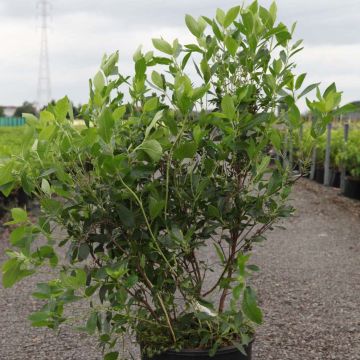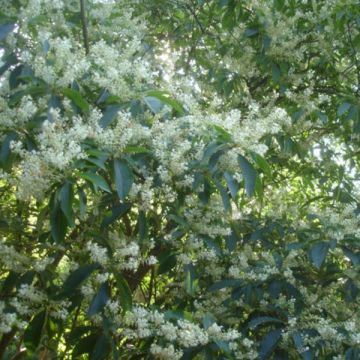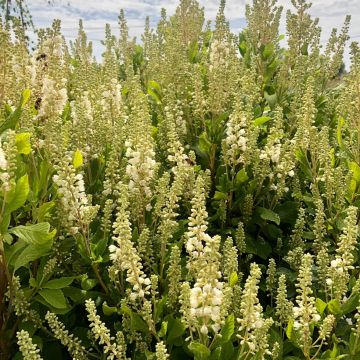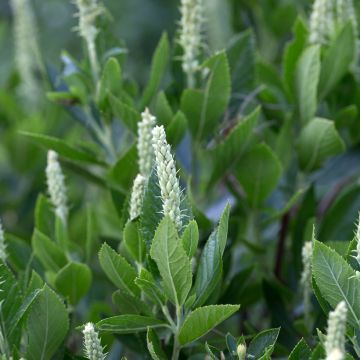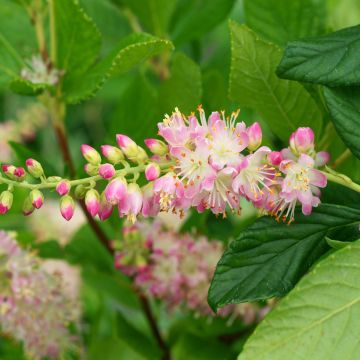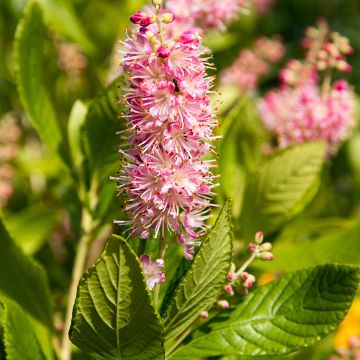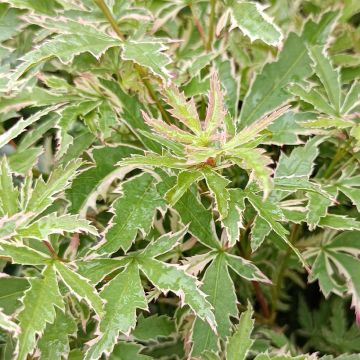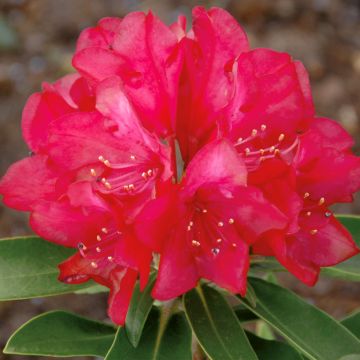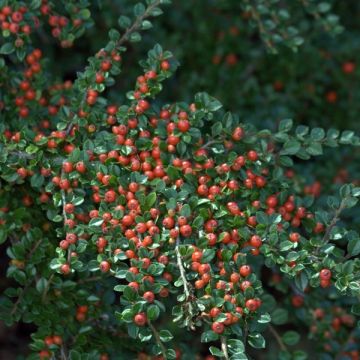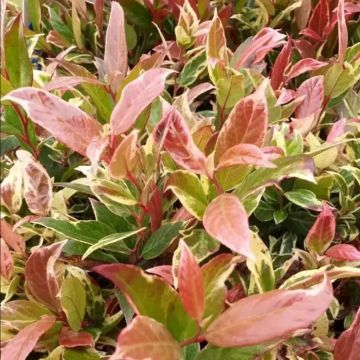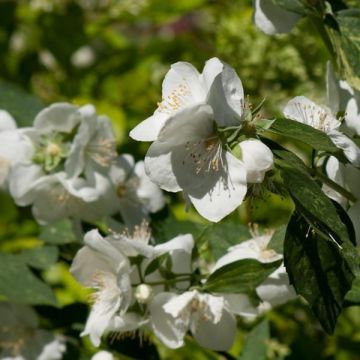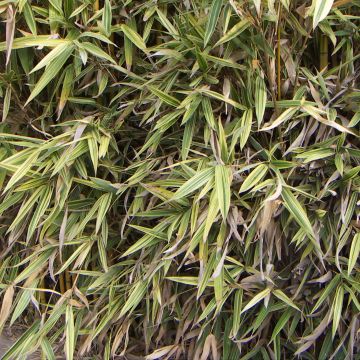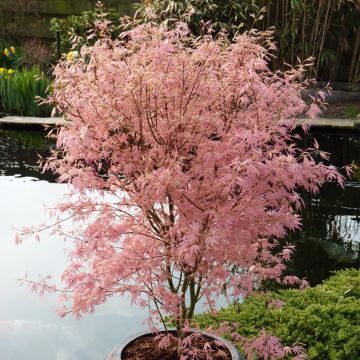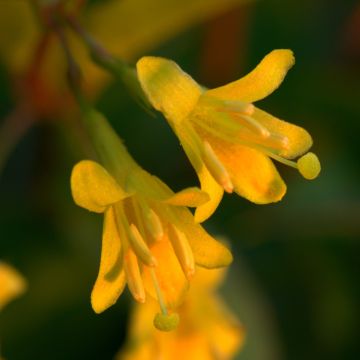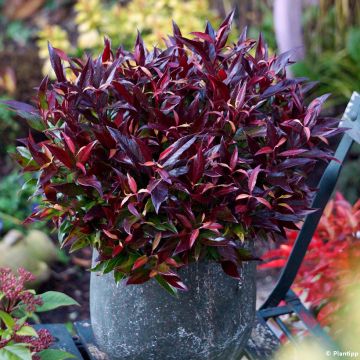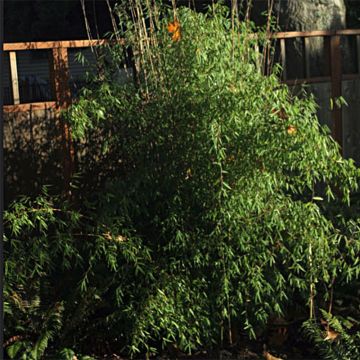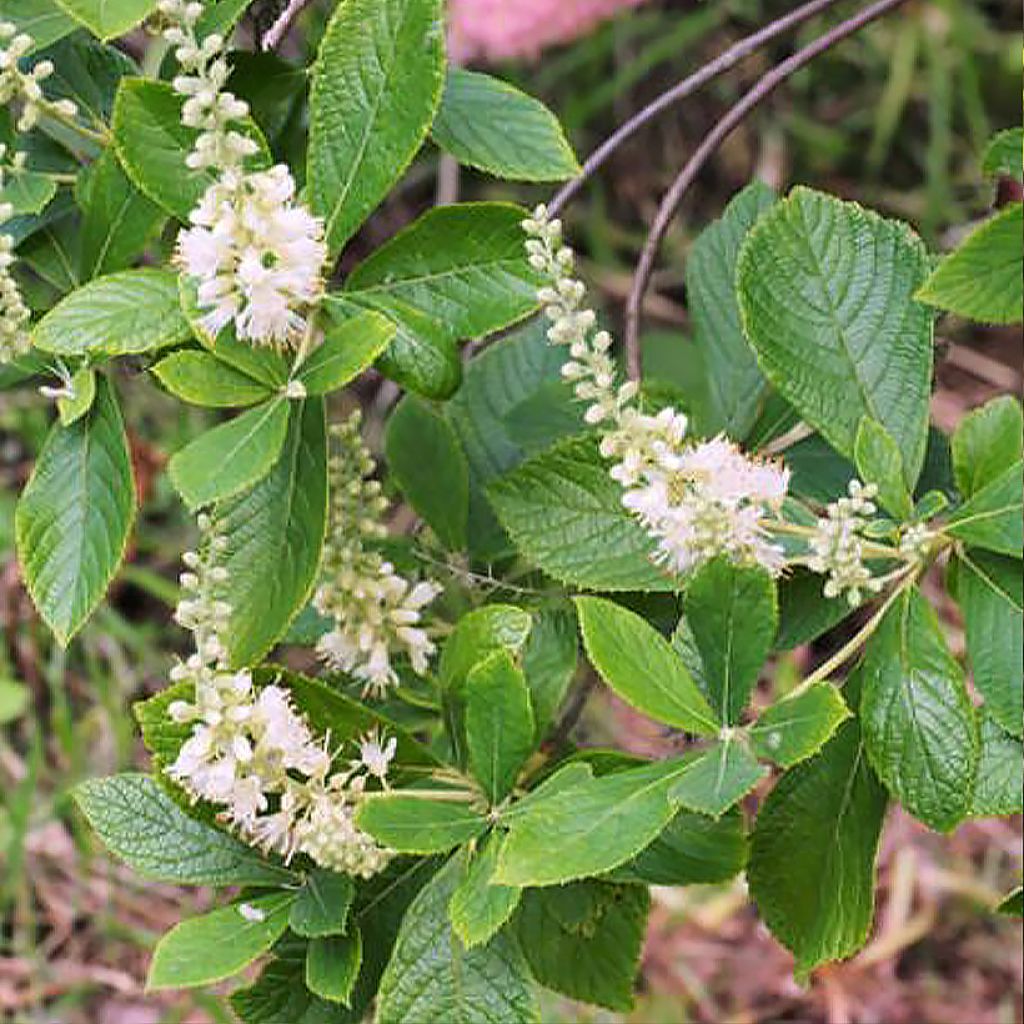

Clethra tomentosa Cottondale - Sweet pepperbush
Clethra tomentosa Cottondale - Sweet pepperbush
Clethra tomentosa Cottondale
Sweet pepperbush, Summer sweet
Why not try an alternative variety in stock?
View all →This plant carries a 24 months recovery warranty
More information
We guarantee the quality of our plants for a full growing cycle, and will replace at our expense any plant that fails to recover under normal climatic and planting conditions.
From €5.90 for pickup delivery and €6.90 for home delivery
Express home delivery from €8.90.
Does this plant fit my garden?
Set up your Plantfit profile →
Description
The Clethra tomentosa 'Cottondale' is a deciduous bush with a semi-suckering stump, native to the humid forests and marshy areas of Florida. This variety develops woolly leaves covered in small white hairs, giving them a pleasant grey-green hue. The fragrant white flowers are produced in late summer on long racemes. The autumn foliage colour ranges from pale yellow to golden brown before falling. It is a hardy plant in zone 7, down to -15°C, for humus-bearing, non-limestone, moist to wet soils. It thrives in the same conditions as rhododendrons and autumn camellias, with which it forms beautiful combinations.
The Clethra tomentosa is a deciduous shrub native to damp woods, marshes, wet marshes, and riverbanks, often on sandy soils, in the southeastern United States, from North Carolina to Florida, west to Louisiana. It is a rounded, suckering, densely branched bush. The young shoots and the surface of the young leaves are woolly or tomentose, but also shiny. It is known for its highly fragrant white flowers that appear in narrow, drooping panicles. Each inflorescence consists of 2 to 4 flowering racemes. The flowers give way to dark brown seed capsules that can persist until winter. Mature stems have a scaly bark, dark grey to blackish brown. The dark green, glossy, obovate to oblong, toothed leaves take on various shades, but generally attractive shades of yellow to golden brown in autumn. The flowers are very attractive to butterflies and bees.
The 'Cottondale' cultivar forms a bush about 2 to 3 m in all directions. It stands out from the species with larger leaves and increased vigor. The 40 to 50 cm long flower spikes elongate throughout the summer before blooming between September and October. They are composed of multiple small, bell-shaped, white, fuzzy, and fragrant flowers. They bloom from the base to the top of the inflorescence. Their honey scent attracts many pollinating insects. The flowers are followed by small round fruits, gathered in slender clusters, which remain decorative on the branches in winter if they escape the appetite of birds.
The Clethra tomentosa 'Cottondale' will only thrive in light, never drying out, acidic soils in semi-shaded conditions. It is ideal in ericaceous flower beds or at the base of large deciduous trees, provided the soil remains moist in summer. For example, combine it with small rhododendrons with mauve, white, or pink flowers, camellias, mountain laurels, and winter-flowering heathers that will take over after its flowering. As it tolerates container cultivation with regular watering, use it to adorn a terrace or patio. It is advisable to quickly remove suckers if you do not want the plant to take over.
Report an error about the product description
Plant habit
Flowering
Foliage
Botanical data
Clethra
tomentosa
Cottondale
Clethraceae
Sweet pepperbush, Summer sweet
Clethra alnifolia var. tomentosa Cottondale
Cultivar or hybrid
Other Clethra
Planting and care
The Clethra tomentosa Cottondale, hardy up to -15°C, is preferably planted in spring, in soil that remains moist throughout the year, light, well-drained, acidic, in a semi-shaded position. The addition of turf at planting is necessary. Pure ericaceous soil cultivation is also accepted. This bush does not tolerate limestone or drought. Remove faded flowers and, in winter, prune old stems. It is naturally resistant to diseases and parasites.
Planting period
Intended location
Care
This item has not been reviewed yet - be the first to leave a review about it.
Shrubs for semi-shade
Haven't found what you were looking for?
Hardiness is the lowest winter temperature a plant can endure without suffering serious damage or even dying. However, hardiness is affected by location (a sheltered area, such as a patio), protection (winter cover) and soil type (hardiness is improved by well-drained soil).

Photo Sharing Terms & Conditions
In order to encourage gardeners to interact and share their experiences, Promesse de fleurs offers various media enabling content to be uploaded onto its Site - in particular via the ‘Photo sharing’ module.
The User agrees to refrain from:
- Posting any content that is illegal, prejudicial, insulting, racist, inciteful to hatred, revisionist, contrary to public decency, that infringes on privacy or on the privacy rights of third parties, in particular the publicity rights of persons and goods, intellectual property rights, or the right to privacy.
- Submitting content on behalf of a third party;
- Impersonate the identity of a third party and/or publish any personal information about a third party;
In general, the User undertakes to refrain from any unethical behaviour.
All Content (in particular text, comments, files, images, photos, videos, creative works, etc.), which may be subject to property or intellectual property rights, image or other private rights, shall remain the property of the User, subject to the limited rights granted by the terms of the licence granted by Promesse de fleurs as stated below. Users are at liberty to publish or not to publish such Content on the Site, notably via the ‘Photo Sharing’ facility, and accept that this Content shall be made public and freely accessible, notably on the Internet.
Users further acknowledge, undertake to have ,and guarantee that they hold all necessary rights and permissions to publish such material on the Site, in particular with regard to the legislation in force pertaining to any privacy, property, intellectual property, image, or contractual rights, or rights of any other nature. By publishing such Content on the Site, Users acknowledge accepting full liability as publishers of the Content within the meaning of the law, and grant Promesse de fleurs, free of charge, an inclusive, worldwide licence for the said Content for the entire duration of its publication, including all reproduction, representation, up/downloading, displaying, performing, transmission, and storage rights.
Users also grant permission for their name to be linked to the Content and accept that this link may not always be made available.
By engaging in posting material, Users consent to their Content becoming automatically accessible on the Internet, in particular on other sites and/or blogs and/or web pages of the Promesse de fleurs site, including in particular social pages and the Promesse de fleurs catalogue.
Users may secure the removal of entrusted content free of charge by issuing a simple request via our contact form.
The flowering period indicated on our website applies to countries and regions located in USDA zone 8 (France, the United Kingdom, Ireland, the Netherlands, etc.)
It will vary according to where you live:
- In zones 9 to 10 (Italy, Spain, Greece, etc.), flowering will occur about 2 to 4 weeks earlier.
- In zones 6 to 7 (Germany, Poland, Slovenia, and lower mountainous regions), flowering will be delayed by 2 to 3 weeks.
- In zone 5 (Central Europe, Scandinavia), blooming will be delayed by 3 to 5 weeks.
In temperate climates, pruning of spring-flowering shrubs (forsythia, spireas, etc.) should be done just after flowering.
Pruning of summer-flowering shrubs (Indian Lilac, Perovskia, etc.) can be done in winter or spring.
In cold regions as well as with frost-sensitive plants, avoid pruning too early when severe frosts may still occur.
The planting period indicated on our website applies to countries and regions located in USDA zone 8 (France, United Kingdom, Ireland, Netherlands).
It will vary according to where you live:
- In Mediterranean zones (Marseille, Madrid, Milan, etc.), autumn and winter are the best planting periods.
- In continental zones (Strasbourg, Munich, Vienna, etc.), delay planting by 2 to 3 weeks in spring and bring it forward by 2 to 4 weeks in autumn.
- In mountainous regions (the Alps, Pyrenees, Carpathians, etc.), it is best to plant in late spring (May-June) or late summer (August-September).
The harvesting period indicated on our website applies to countries and regions in USDA zone 8 (France, England, Ireland, the Netherlands).
In colder areas (Scandinavia, Poland, Austria...) fruit and vegetable harvests are likely to be delayed by 3-4 weeks.
In warmer areas (Italy, Spain, Greece, etc.), harvesting will probably take place earlier, depending on weather conditions.
The sowing periods indicated on our website apply to countries and regions within USDA Zone 8 (France, UK, Ireland, Netherlands).
In colder areas (Scandinavia, Poland, Austria...), delay any outdoor sowing by 3-4 weeks, or sow under glass.
In warmer climes (Italy, Spain, Greece, etc.), bring outdoor sowing forward by a few weeks.

































